VTOL: Flaps
Trim: Trim
AG2: Reversers
AG4: Emergency slides
AG5:Autopilot/Arcade mode
For further information check out the original build
The Boeing 747 is a large, long-range wide-body airliner manufactured by Boeing Commercial Airplanes in the United States. After introducing the 707 in October 1958, Pan Am wanted a jet 2+1/2 times its size, to reduce its seat cost by 30% to democratize air travel. In 1965, Joe Sutter left the 737 development program to design the 747, the first twin aisle airliner. In April 1966, Pan Am ordered 25 Boeing 747-100 aircraft and in late 1966, Pratt & Whitney agreed to develop its JT9D engine, a high-bypass turbofan. On September 30, 1968, the first 747 was rolled out of the custom-built Everett Plant, the world's largest building by volume. The first flight took place on February 9, 1969, and the 747 was certified in December of that year. It entered service with Pan Am on January 22, 1970. The 747 was the first airplane dubbed a "Jumbo Jet", the first wide-body airliner
The 747-300 features a 23-foot-4-inch-longer (7.11 m) upper deck than the -200. The stretched upper deck (SUD) has two emergency exit doors and is the most visible difference between the -300 and previous models. After being made standard on the 747-300, the SUD was offered as a retrofit, and as an option to earlier variants still in-production. An example for a retrofit were two UTA -200 Combis being converted in 1986, and an example for the option were two brand-new JAL -100 aircraft (designated -100BSR SUD), the first of which was delivered on March 24, 1986.
The 747-300 introduced a new straight stairway to the upper deck, instead of a spiral staircase on earlier variants, which creates room above and below for more seats. Minor aerodynamic changes allowed the -300's cruise speed to reach Mach 0.85 compared with Mach 0.84 on the -200 and -100 models, while retaining the same takeoff weight. The -300 could be equipped with the same Pratt & Whitney and Rolls-Royce powerplants as on the -200, as well as updated General Electric CF6-80C2B1 engines.
Swissair placed the first order for the 747-300 on June 11, 1980. The variant revived the 747-300 designation, which had been previously used on a design study that did not reach production. The 747-300 first flew on October 5, 1982, and the type's first delivery went to Swissair on March 23, 1983.[42] In 1982, its unit cost was US$83M (222.6M today). Besides the passenger model, two other versions (-300M, -300SR) were produced. The 747-300M features cargo capacity on the rear portion of the main deck, similar to the -200M, but with the stretched upper deck it can carry more passengers. The 747-300SR, a short range, high-capacity domestic model, was produced for Japanese markets with a maximum seating for 584. No production freighter version of the 747-300 was built, but Boeing began modifications of used passenger -300 models into freighters in 2000.
A total of 81 747-300 series aircraft were delivered, 56 for passenger use, 21 -300M and 4 -300SR versions. In 1985, just two years after the -300 entered service, the type was superseded by the announcement of the more advanced 747-400. The last 747-300 was delivered in September 1990 to Sabena. While some -300 customers continued operating the type, several large carriers replaced their 747-300s with 747-400s. Air France, Air India, Pakistan International Airlines, and Qantas were some of the last major carriers to operate the 747-300. On December 29, 2008, Qantas flew its last scheduled 747-300 service, operating from Melbourne to Los Angeles via Auckland.[174] In July 2015, Pakistan International Airlines retired their final 747-300 after 30 years of service. As of July 2019, only two 747-300s remain in commercial service, with Mahan Air (1) and TransAVIAexport Airlines (1).
Wright International airlimes was an airline from Indonesian Colonial of Wright Isles. This airline was the biggest in simplandian and second biggest in oceania after Qantas. The airline was eatabilished in 1974 after a merger of British Wright Airways, Horizon Air, TransOcenaianExpress, and Paranan Air Taxi. They currently have 101 aircraft mostly Airbus type
This example(MSN:23226, Reg: RP-C1144, Nosename "City of Edmonton")was delivered to WIA in 1984. She operated for WIA until 1990 when she was operated by Sabena(Reg: OO-SSG) until 1995. After that this plane operated again by WIA until 2009 when this airline withdraw all 747-200, 747SP, 747-300, A310, L-1011 from service and this plane was put on storage ar Maywar Airport until 2016, when this plane
scrappped for parts
Operator list for this airframe
Reg: RP-C1144
Operator: Wright International Airlines
Delivery Date:11 Oct 1984
Engine: 4x GE
Remark/Nosename: "City of Edmonton"
Reg: OO-SSG
Operator: Sabena
Delivery Date: 10 Oct 1990
Engine: 4x GE
Remark: lsd
Reg: PK-BAZ
Operator: Wright International Airlines
Delivery Date:1 Aug 1995
Engine4x GE
Remark/Nosename: "South Georgia"
Status:Stored in Maywar Airport in 1998 until 2001, Broken up in Maywar Airport in 2016
Credit to Jelybaca for the airframe
Specifications
General Characteristics
- Predecessor Boeing 747-400 Philippine Airlines
- Successors 2 airplane(s) +37 bonus
- Created On Android
- Wingspan 199.9ft (60.9m)
- Length 232.8ft (70.9m)
- Height 65.4ft (19.9m)
- Empty Weight N/A
- Loaded Weight 93,120lbs (42,238kg)
Performance
- Power/Weight Ratio 4.344
- Wing Loading 13.7lbs/ft2 (67.1kg/m2)
- Wing Area 6,774.2ft2 (629.3m2)
- Drag Points 46095
Parts
- Number of Parts 680
- Control Surfaces 7
- Performance Cost 3,641

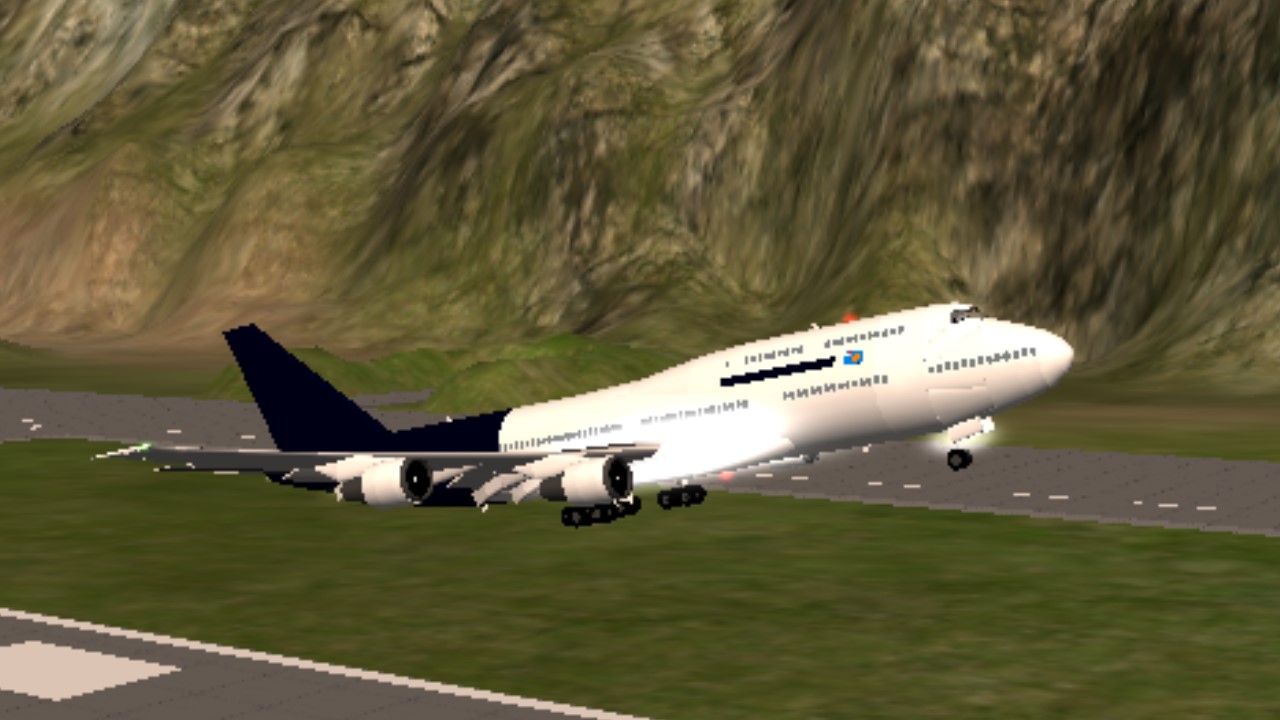
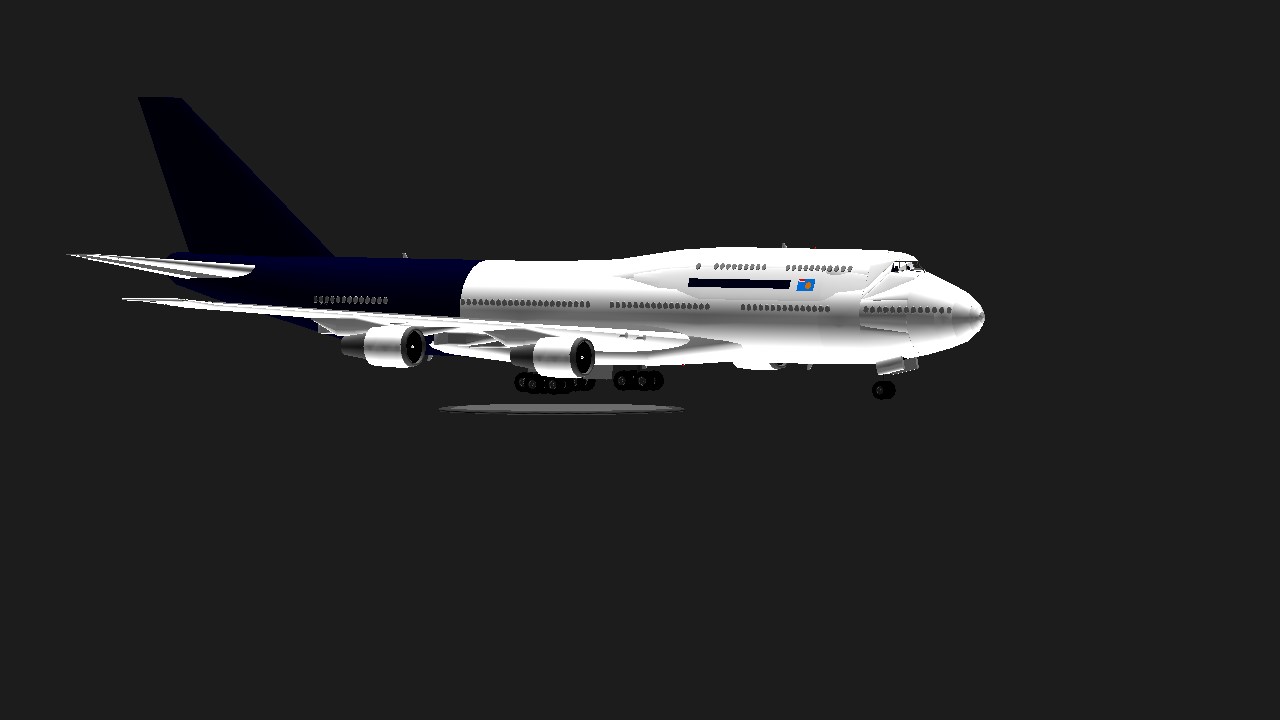
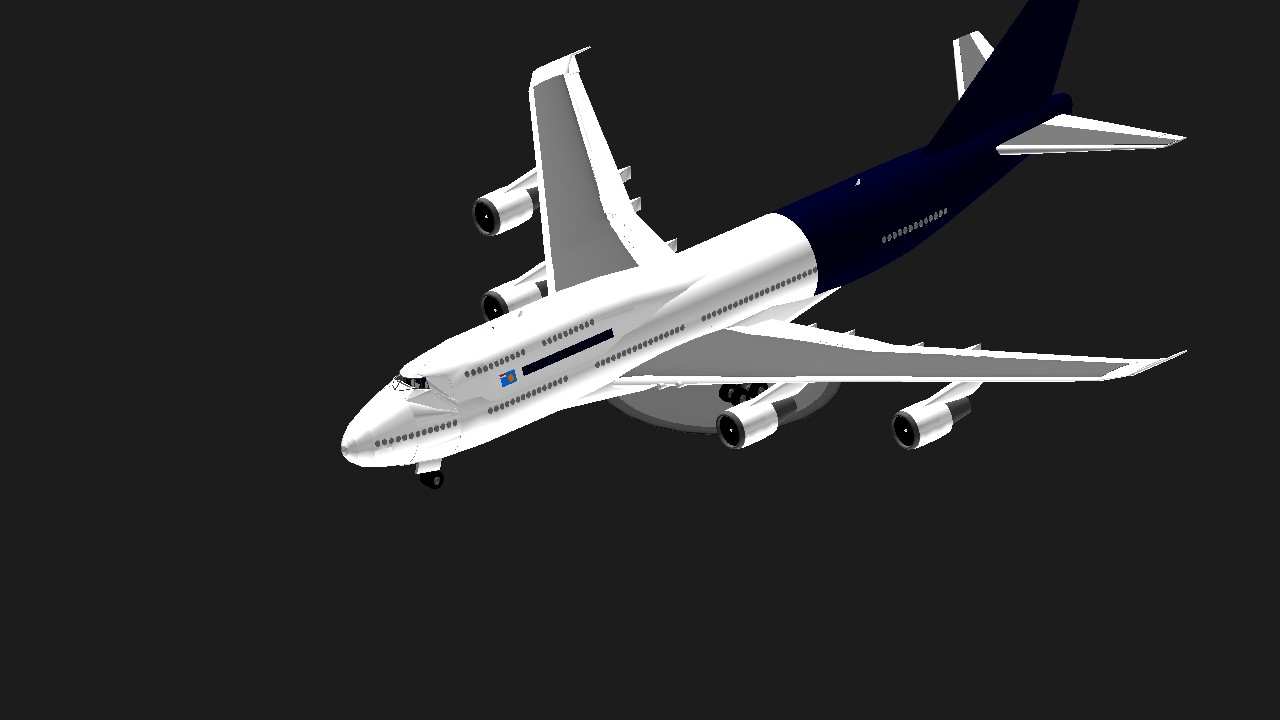
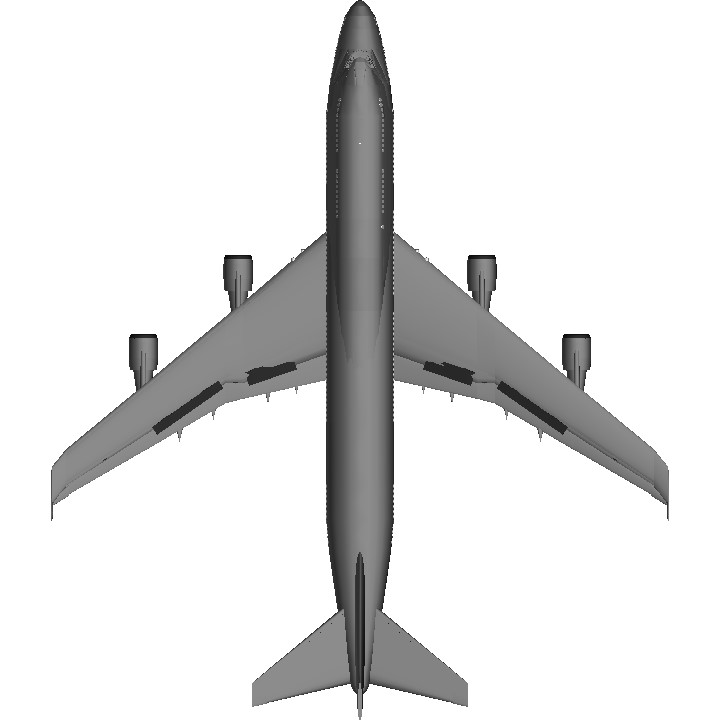
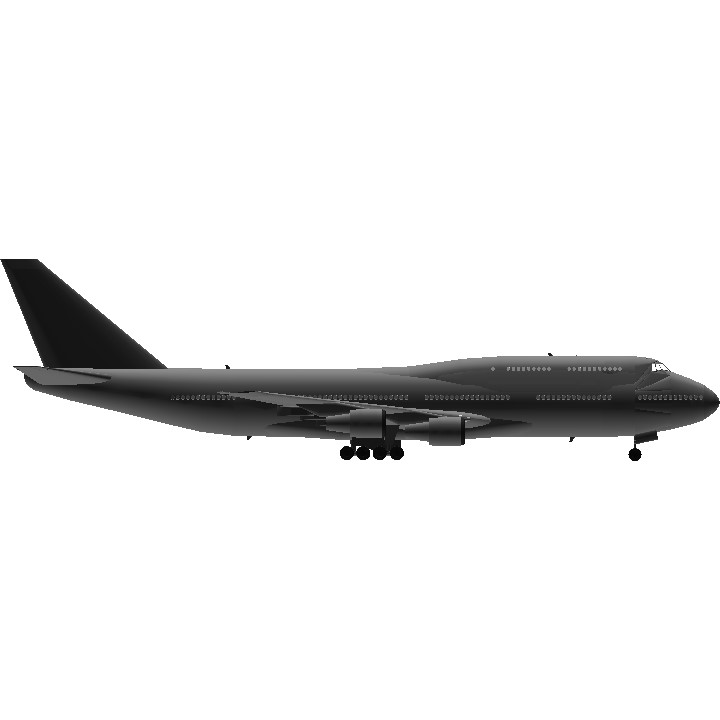
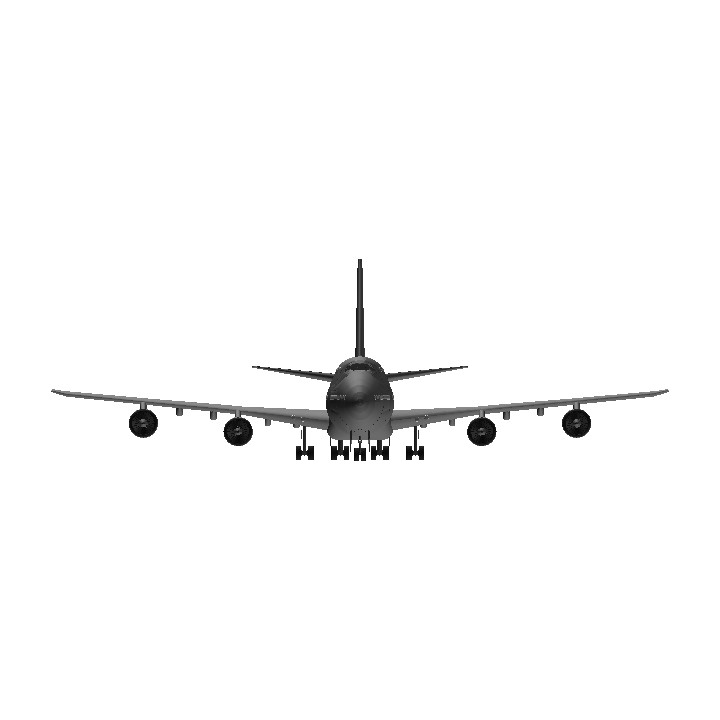
i blanked up the plane